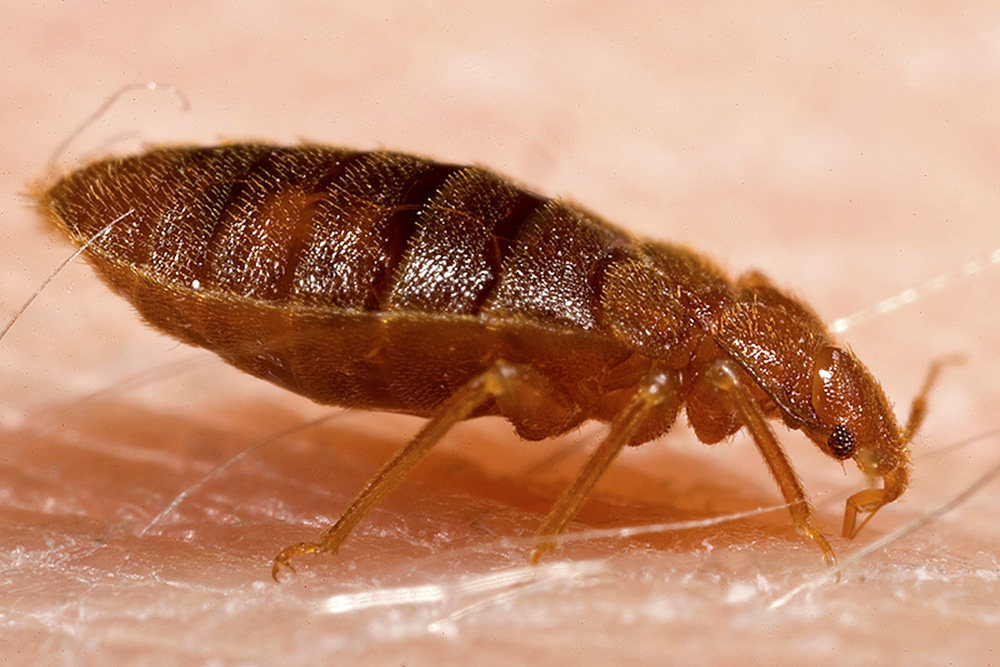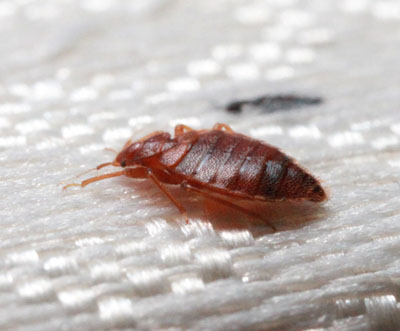High-temperature Bed Bug Heat Treatment penetrates deep into furniture and hidden spaces to eliminate bed bugs.
Comprehending Bed Insect Therapy and Its Role in Comprehensive Insect Control
The prevalence of bed insects in different settings has underscored the requirement of comprehending efficient therapy strategies within the wider context of thorough pest control. As problems position significant health dangers and can interfere with daily life, exploring the subtleties of efficient therapy and the relevance of professional intervention comes to be extremely important.

Introduction of Bed Insects
Bed pests, clinically called Cimex lectularius, have arised as a substantial insect problem in metropolitan and suv settings worldwide. These nighttime pests primarily prey on human blood, causing discomfort and distress to those impacted. Adult bed pests are reddish-brown, around 4-5 mm in size, and have level, oblong bodies that allow them to hide conveniently in small crevices, such as mattress seams, bed frameworks, and furniture.
Reproduction occurs rapidly, with women laying up to 5 eggs daily, adding to the speedy acceleration of invasions. Bed pests are not understood to transfer illness, however their attacks can cause sensitive reactions and second infections from scraping. The parasites are highly resilient, making it through for months without feeding, which makes complex removal initiatives.
Their resurgence recently can be attributed to greater global travel, the rise of used furniture markets, and resistance to traditional pesticides. Efficient administration needs a mix of sanitation, tracking, and targeted treatment techniques. Comprehending the biology and habits of bed bugs is important for developing effective control approaches and minimizing their influence on human health and wellness.
Indications of Problem
Recognizing the indicators of a bed insect infestation is essential for prompt intervention and control. Early discovery can dramatically reduce the extent of a problem, making it vital for house owners and occupants to be vigilant - Bed Bug Treatment. Common indications include tiny reddish-brown stains on bedding or furniture, which are frequently the outcome of smashed bed bugs. Furthermore, dark areas, typically feces, might appear on cushions, linens, and walls.
One more dead giveaway is the existence of shed exoskeletons, as bed insects molt throughout their life cycle. An undesirable, moldy smell can emanate from greatly infested locations, connected to the scent glands of these insects. Bed bugs are nocturnal, so locals might see bites on subjected skin after sleeping, usually defined by red, itchy welts prepared in a line or cluster.
Lastly, bed pests can conceal in different places, including cushion joints, box springtimes, bed structures, and even behind wallpaper or electric outlets. Normal examinations of these locations can assist in very early discovery. By recognizing and identifying these indications, individuals can take needed activities to mitigate the problem before it rises.

Therapy Approaches
Successfully addressing a bed pest infestation requires a multi-faceted technique that integrates numerous treatment techniques customized to the extent of the scenario. The primary methods include chemical treatments, warmth therapies, and incorporated insect monitoring (IPM) techniques.
Chemical treatments frequently entail the application of pesticides particularly developed to target bed insects. These can be used in various forms, such as sprays, cleans, or aerosols. It is necessary to pick items that are reliable and safe, adhering to the supplier's guidelines diligently to minimize risks.
Warmth treatments, on the other hand, utilize heats to remove bed insects in all life phases. This technique entails increasing the temperature of ravaged areas to a level deadly to bed pests, normally around 120 ° F(49 ° C )or greater, for a continual period.
Integrated Bug Administration (IPM) integrates both chemical and non-chemical techniques. It emphasizes complete inspections, appropriate sanitation, and keeping an eye on to ensure long-lasting monitoring of bed bug populations. By utilizing these therapy techniques in combination, homeowner can properly remove bed bugs while lessening the danger of reinfestation.
Preventive Procedures
(Bed bug Exterminator)Implementing effective safety nets is vital for lessening the risk of a bed pest invasion. These bugs are infamous for their ability to ride on personal possessions, making watchfulness crucial. Regularly checking second-hand furnishings and clothes prior to bringing them right into your home can considerably minimize the probability of a problem.
Urging a clutter-free atmosphere is additionally essential, as it eliminates possible hiding areas for bed insects. Vacuuming often, specifically in locations such as rooms and living rooms, can aid catch any stray insects or eggs, while securing vacuum cleaner bags firmly avoids their retreat.
In addition, making use of safety covers for mattresses and box springs can produce a barrier that prevents bed insects from resolving in these areas. When traveling, check hotel areas, concentrating on the joints of bed mattress and behind headboards, and maintain luggage off the flooring.
Relevance of Expert Help
(Bed Bug Treatment)
When dealing with a click bed insect infestation, looking for professional aid is commonly important to guarantee comprehensive and reliable therapy - Bed Bug Heat Treatment. Bed bugs are infamously testing to eradicate as a result of their capability to conceal in tiny holes and their fast recreation rate. Specialists possess the experience and specialized devices needed to determine the level of the problem and execute a targeted method
DIY methods might offer temporary alleviation; nevertheless, they frequently stop working to address the origin of the issue, allowing bed pests to re-emerge. Expert insect control solutions utilize a mix of chemical therapies, warm applications, and integrated parasite management strategies customized to the details situation. This diverse approach not only removes existing pests but also reduces the threat of future infestations.
Additionally, professionals can offer beneficial guidance on precautionary steps, assisting house owners understand how to prevent future experiences. Engaging an accredited bug control professional also guarantees conformity with regional guidelines worrying chemical usage, securing both health and wellness and the setting. In conclusion, specialist aid is important for effective bed pest therapy, giving both prompt relief and long-lasting services to recover comfort in impacted areas.
Verdict
In verdict, efficient bed bug therapy necessitates an extensive method that integrates both chemical and non-chemical techniques. Acknowledging the signs of problem and using safety nets are crucial steps in taking care of these resilient insects. The complexity of bed insect habits and their capacity to prosper in different environments emphasize the value of professional aid to ensure detailed elimination. By embracing an organized method, property owners can successfully protect their space and reduce the involved health and wellness dangers of bed insect invasions.